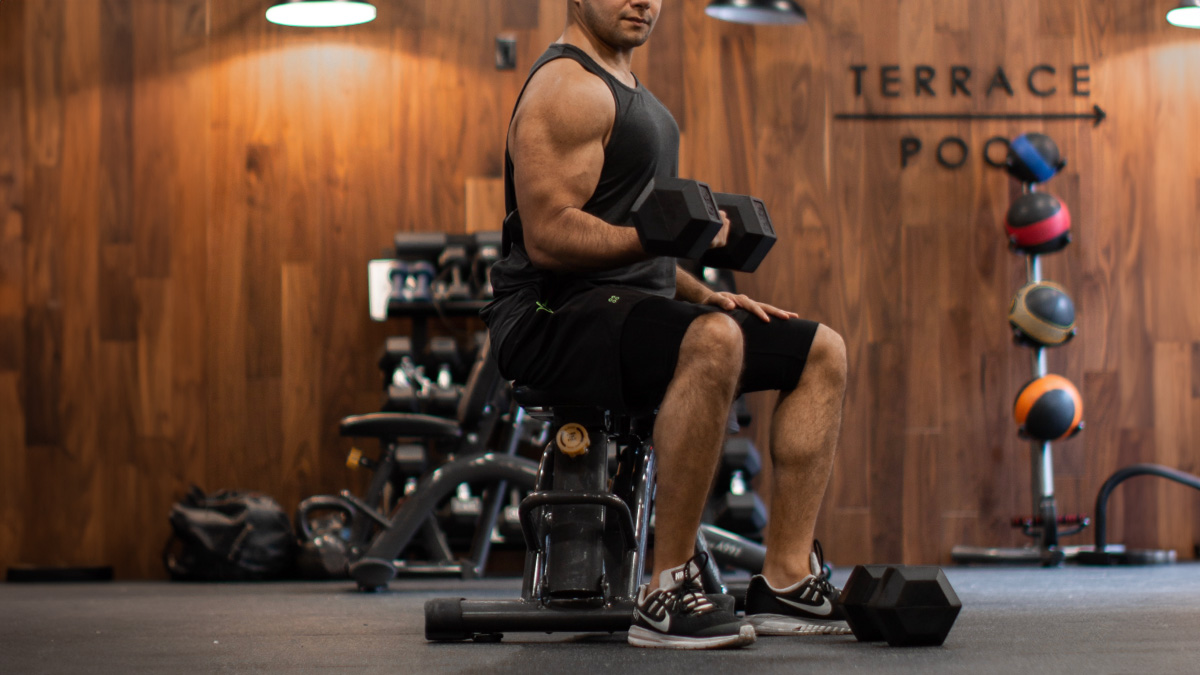Building your home gym can seem like a daunting task, but with the right guidance, it can transform into an exciting and rewarding project.
An intelligently designed home gym not only gives you the convenience of working out in your own space at your own pace, but it can also inspire you to maintain a consistent fitness regimen. Whether your goal is to lose weight, gain muscle, or simply improve your overall health, this guide will walk you through all the essentials of building a home gym that meets your individual needs and preferences. Let’s embark on this journey towards creating a personal fitness sanctuary right in the comfort of your own home!
Identify Your Fitness Goals
Before you start purchasing equipment, it’s important to identify what your fitness goals are. Are you looking to lose weight, build muscle, or improve cardio health? Knowing precisely what you want to achieve will help you determine which equipment and accessories are best suited for your home gym set-up. Additionally, it’s important to establish a realistic timeline for achieving these goals, so that you can hold yourself accountable and stay on schedule. Once that is done, think about the time you will spend there and this will help you learn more about the type of equipment you want. Moreover, whether you should get it from https://strengthwarehouseusa.com/ or from a physical store will depend on your budget as well. Goal identification, especially early on, is essential to creating an effective home gym and will ensure that you make the most of your newly built fitness sanctuary.
Budget Consideration and Equipment Selection
In order for your home gym to be effective, it must also be affordable. Consider a budget range that suits your lifestyle and needs; this will help you decide which pieces of equipment are best suited for your personal goals. Some basics include an adjustable bench, weights, and a weight rack or power cage. For aerobic work, consider purchasing a stationary bike, treadmill, rowing machine, or elliptical. Finally, you may want to include accessories such as resistance bands and a medicine ball for added variety in your workouts. Remember, this is just the start of creating your home gym; so think ahead and be creative with which piece of equipment best empowers you to meet your goals!
Personalized Design & Workout Space
Once you have selected the equipment you wish to purchase, consider where it will be placed and how much room it requires. Take into account factors such as lighting, noise, and ventilation; these can greatly impact your workout experience. Additionally, think about how you’d like the space to look and feel. Invest in high-quality materials that reflect your own personal style and preferences. This way, you will enjoy spending time in the area and be motivated to stay on track with your fitness goals. When thinking about flooring, for instance, consider whether a hardwood, foam, or rubberized material will work best for the type of activities you plan to do in your home gym. Other elements such as mirrors, wall art, or music speakers can also be used to create a more inspiring and productive workout environment.

Safety & Maintenance
Finally, it is essential to keep safety in mind when building a home gym. Take the time to learn how to use each piece of equipment properly. Additionally, always check for any potential hazards or wear and tear that may have occurred over time. If you notice any damages, it’s best to replace the equipment and keep up with regular maintenance and care. Doing so will ensure that your home gym is safe for use and can help prolong its lifespan. You will want to focus on keeping your space clean and organized, as it will enable you to get the most out of each workout session. Moreover, it will keep you motivated to maintain a consistent fitness regimen.
Lighting and Ventilation
Ensure your gym has adequate lighting and ventilation. Natural light can be inspiring, and proper ventilation will keep the area fresh. You can also add ambient lighting or a fan to make it more comfortable. Additionally, think about the best way to store your equipment and materials in order to maximize available space. Designating bins and keeping things off the ground will not only help keep your workout area organized, but it will also reduce potential accidents due to tripping over items. Most importantly, make sure your home gym is a place you enjoy spending time and feel comfortable exercising in.
Storage Solutions
Think about where you will store your equipment when it’s not in use. Shelves, racks, or storage bins can help keep your space organized. It’s important to choose items that are easy to access and won’t take up too much room. If you have limited space, select products that can be easily folded and put away when not in use. Additionally, a good sound system is essential for keeping your workouts interesting. Investing in wireless or Bluetooth speakers will allow you to play your favorite music or podcasts without any hassle.
Building a home gym is a commitment to your health and well-being. It’s about creating a space that inspires you to push yourself, strive for progress, and appreciate every step of your fitness journey. While there are many factors to consider – from identifying your fitness goals to selecting the right equipment, designing a motivating environment, and ensuring safety – the effort you invest in constructing your home gym will pay dividends in the long run. Remember, the goal is not just to create a space for exercise, but a personal sanctuary that fosters self-improvement and well-being. With careful planning, a realistic budget, and a dash of creativity, you can create a home gym that is tailored to your needs and preferences. So, take the first step today towards building your home fitness sanctuary; your future self will thank you.
